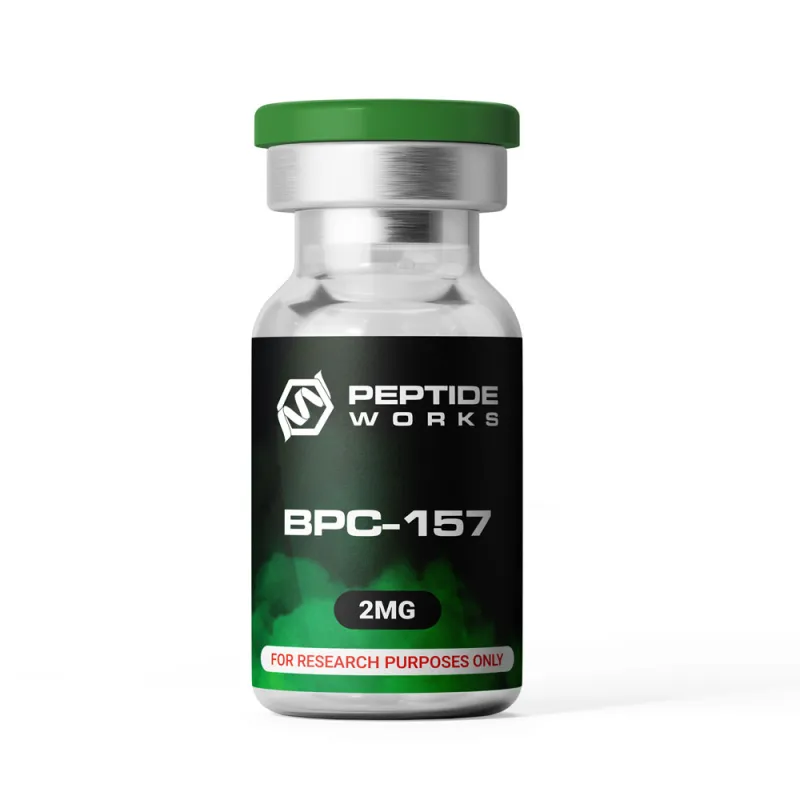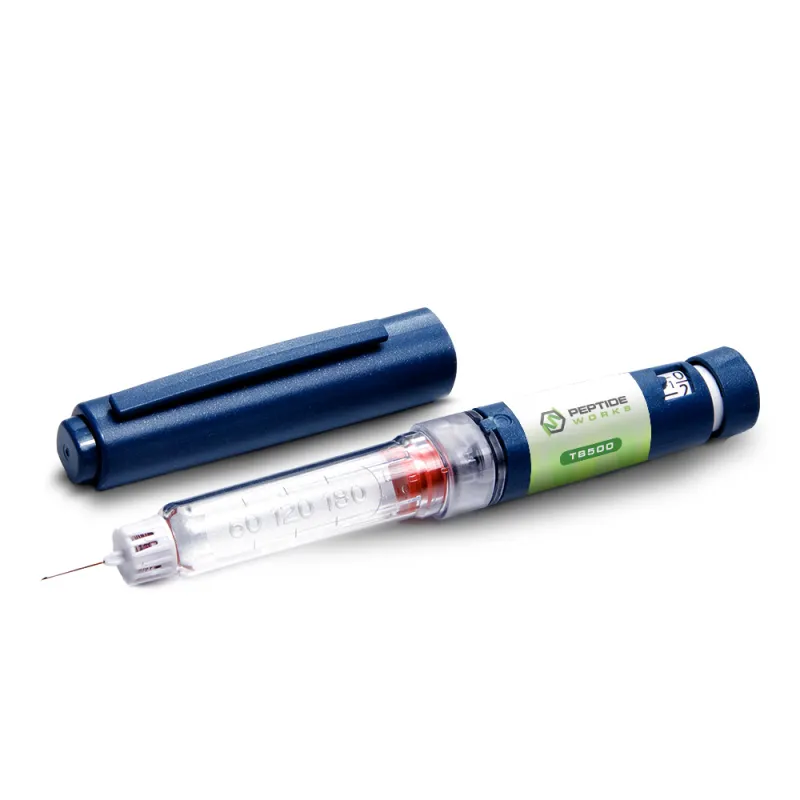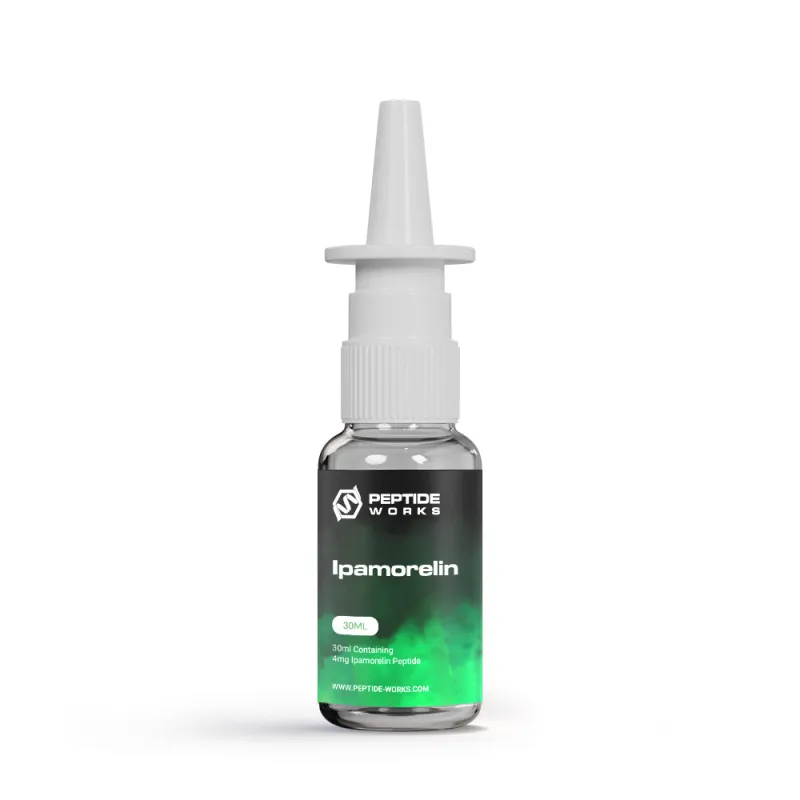
PROMO!
First order? Get 10% OFF with this code: 1storder
Written by

Chronic inflammation acts like a fire that never stops burning. It slows recovery, drains energy, and blocks proper tissue repair. For this reason, researchers are now turning their attention to the Adamax peptide, as its unique design appears to play a role in modulating inflammatory pathways.
Adamax builds on the Semax family but adds an adamantane group that researchers believe changes how the peptide works. This small change may give it greater stability and more targeted activity. Early reports suggest Adamax peptide could influence immune signals, ease inflammatory stress, and support cellular repair, three areas researchers see as vital for finding new approaches to chronic inflammation.
Because immune activity drives every inflammatory response, understanding how Adamax may shape these signals becomes essential.
Explore Adamax Peptide from Peptide Works, a Semax-derived research peptide with an adamantane group, studied for its potential role in immune signaling, oxidative stress, and cellular repair.

The Adamax peptide attracts interest due to its potential to interact with immune communication. Immune activity depends on cytokines, the messengers that trigger or calm inflammation depending on the body’s needs.
When these signals remain active for too long, inflammation turns chronic, and researchers hypothesize that the Adamax peptide promotes a healthier rhythm in this system by influencing cytokine behavior. This focus on immune signaling makes it one of the most important areas for understanding Adamax peptide in chronic inflammation.
Yet inflammation doesn’t work through signals alone it also creates oxidative pressure inside cells that can block healing.
Inflammatory stress is more than discomfort. It is the constant strain placed on cells when inflammation refuses to turn off. The Adamax peptide draws attention because of its potential role in limiting oxidative pressure, which can damage proteins, lipids, and DNA.
By potentially protecting healthy cells from this stress, Adamax peptide may help limit damage from spreading into surrounding tissue. This dual approach modulating immune signals while reducing oxidative stress positions Adamax as a peptide worth exploring in depth. But Adamax peptide is not the only compound of interest other peptides are studied for their effects on inflammation and repair, offering different perspectives on chronic inflammatory challenges.
Addressing both signals and stress shows Adamax’s potential, but researchers often compare it with other peptides that act on different parts of the inflammatory process.

When researchers study chronic inflammation, they look beyond single compounds. Peptides like BPC-157, TB-500, and Ipamorelin have attracted attention in research for their potential roles in different aspects of the inflammatory cascade. Comparing these peptides to Adamax reveals a landscape of complementary approaches rather than competing solutions.
Each peptide is thought to bring distinct mechanisms to the table, based on early findings. While Adamax peptide focuses on immune cytokine balance and oxidative protection, BPC-157 connects tissue healing with gut health. TB-500 targets cellular mobility and scar formation. Ipamorelin works through hormone pathways.
| Peptide | Primary Focus | Inflammation Angle | Unique Edge |
|---|---|---|---|
| Adamax Peptide | Immune signals, oxidative stress | May balance cytokines, protect cells | Modified structure with adamantane group |
| BPC-157 | Tissue protection, gut connection | May reduce spread of inflammation | Links gut health with systemic balance |
| TB-500 | Cell mobility, scar tissue control | May reduce damage from fibrosis | Actin regulation + tissue recovery |
| Ipamorelin | Hormone-driven recovery | May improve repair through GH release | Ghrelin pathway for hormonal balance |
One of the most discussed is BPC-157, a peptide linked to gut health and its role in controlling inflammation.
Discover BPC-157 from Peptide Works, a research peptide linked to tissue protection and gut health, explored for its ability to balance inflammatory signals and support recovery.
BPC-157 attracts attention in animal studies because it may help balance inflammatory signals that remain switched on too long. Chronic inflammation often results when pro-inflammatory signals dominate, leading to damage in otherwise healthy tissue. By guiding this balance, BPC-157 could slow the spread of inflammation and support recovery.
Its reported connection to gut health also makes it relevant, particularly in preclinical research. Chronic inflammation is frequently linked to digestive imbalances, and BPC-157 may help maintain stability in that system. This potential gives it a complementary role alongside Adamax peptide, which focuses more on immune signaling and oxidative stress.
While BPC-157 is tied to gut and signal balance, TB-500 takes a different approach by focusing on cellular movement and structural repair.

TB-500 is often discussed in relation to actin regulation, a process that allows cells to move and repair damaged areas. Chronic inflammation often interferes with this process, leaving tissue weak and slow to heal. TB-500 is hypothesized to help restore mobility and support structural repair, though these mechanisms remain under investigation.
It is also tied to fibrosis, a common effect of long-term inflammation where excess scar tissue forms. By potentially helping reduce this buildup, TB-500 could protect tissue from lasting damage, though more research is needed to confirm these mechanisms. This approach differs from Adamax, which works more on the signaling level, while TB-500 acts on physical repair.
TB-500 works at the structural level, but Ipamorelin stands out because it acts through hormones, adding yet another angle to chronic inflammation.
Shop TB-500 at Peptide Works, a fragment of thymosin beta-4 studied for its potential in cell mobility, tissue repair, and reducing fibrosis caused by chronic inflammation.

Ipamorelin works through the ghrelin receptor, triggering growth hormone release. Chronic inflammation often disrupts hormone balance, leaving the body tired and less able to repair itself. By stimulating growth hormone, Ipamorelin is thought to help restore conditions that could support recovery.
This makes it a different tool than Adamax, BPC-157, or TB-500. Instead of working directly on immune signals or scar tissue, Ipamorelin may counter the hormonal imbalance that chronic inflammation creates. Its role highlights how varied approaches may be needed to address long-term inflammation fully.
Together, these peptides show how inflammation research requires many strategies, each acting on a different part of the process.
Find Ipamorelin at Peptide Works, a ghrelin receptor agonist researched for its ability to stimulate growth hormone release and support recovery through hormonal balance.
Anti-inflammatory peptides such as Adamax, BPC-157, TB-500, and Ipamorelin highlight the growing opportunities in peptide-based inflammation research. Researchers explore each for its unique ability to influence immune balance, reduce cellular stress, or promote repair. Together, these peptides show how peptide science continues to expand, opening multiple paths to better understand and address long-term inflammation.
At Peptide Works, we supply a diverse range of high-quality, research-grade peptides including Adamax, BPC-157, TB-500, Ipamorelin, and more. We make them available for research use only and ship worldwide to support researchers as they uncover insights that could define the future of peptide science and inflammation research.
All products discussed are supplied for research purposes only and are not intended for human use.
[1] La Manna S, Di Natale C, Florio D, Marasco D. Peptides as Therapeutic Agents for Inflammatory-Related Diseases. Int J Mol Sci. 2018 Sep 11;19(9):2714.
[2] Keremi B, Lohinai Z, Komora P, Duhaj S, et al. Antiinflammatory effect of BPC 157 on experimental periodontitis in rats. J Physiol Pharmacol. 2009 Dec;60 Suppl 7:115-22.
[3] Maar K, Hetenyi R, Maar S, Faskerti G, et al. Utilizing Developmentally Essential Secreted Peptides Such as Thymosin Beta-4 to Remind the Adult Organs of Their Embryonic State-New Directions in Anti-Aging Regenerative Therapies. Cells. 2021 May 28;10(6):1343.
[4] Raun K, Hansen BS, Johansen NL, Thøgersen H, et al. Ipamorelin, the first selective growth hormone secretagogue. Eur J Endocrinol. 1998 Nov;139(5):552-61.
ALL CONTENT AND PRODUCT INFORMATION AVAILABLE ON THIS WEBSITE IS FOR EDUCATIONAL PURPOSES ONLY.
DISCLAIMER: These products are intended solely as a research chemical only. This classification allows for their use only for research development and laboratory studies. The information available on our Peptide Works website: https://peptide-works.com/ is provided for educational purposes only. These products are not for human or animal use or consumption in any manner. Handling of these products should be limited to suitably qualified professionals. They are not to be classified as a drug, food, cosmetic, or medicinal product and must not be mislabelled or used as such.
Peptide Works
Related Articles

How effective could Orexin Addiction Therapy be?
Have you ever wondered why some people find it so hard to stop addictive habits, even when they truly want

Can NAD Therapy Improve Cognitive Performance?
NAD Therapy is gaining attention in research for its possible role in brain health. NAD+ (nicotinamide adenine dinucleotide) is a

Enhancing Energy with NAD+ Supplements
Energy is the driving force behind focus, movement, and recovery. When cells have less energy to work with, the body